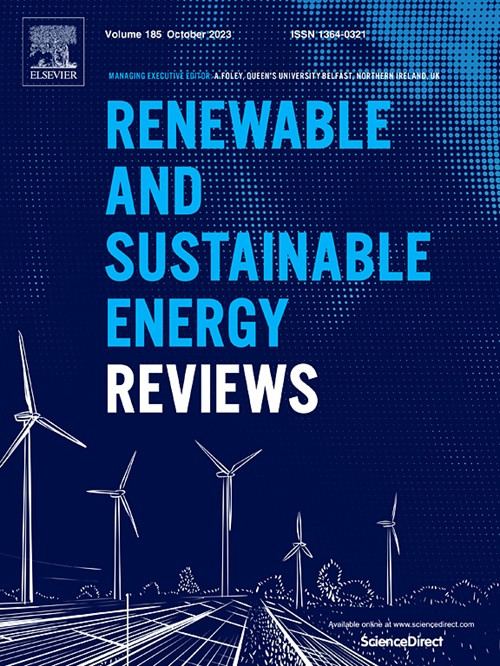使用碳基纳米材料增强空调压缩机润滑油用于炎热气候
IF 16.3
1区 工程技术
Q1 ENERGY & FUELS
引用次数: 0
摘要
本研究评估了碳基纳米润滑剂对炎热气候下空调系统的影响,重点关注热物理、摩擦学和稳定性。将POE32油与短单壁碳纳米管(short- swcnts)、短多壁碳纳米管(short- mwcnts)和石墨烯(GN)在0.01至0.10体积%的浓度下配制成纳米润滑剂。采用两步混合方法,并在10°C至100°C范围内分析了性能。结果显示密度随浓度变化可忽略不计,但随温度变化可达6%。比热容随着纳米材料浓度的增加而降低,在100°C下,0.1 vol.%的短swcnts使比热容降低6.85%。当GN为0.01 vol.%时,导热系数的提高最小,但当GN为0.10 vol.%时,导热系数的提高达到2.21%。动态粘度在0.05和0.10 vol.%时显著增加,在15.31%时达到峰值。摩擦学分析显示,短swcnts、短mwcnts和GN的最佳摩擦系数(COF)分别降低0.025、0.05和0.01 vol.%。在分散稳定性方面,通过三种不同的分析进行验证,所制备的纳米润滑剂在5天内都具有良好的物理稳定性,然后随着时间的推移失去其静态稳定状态。FOMs分析结果表明,优化后的碳基纳米润滑油浓度可以在能量冲击最小的情况下提高压缩机的散热性能和性能。这些发现为交流系统选择最佳纳米润滑剂提供了有价值的见解。未来的工作将集中在评估它们与制冷剂的兼容性以及评估它们在高环境条件下对压缩机性能的影响。本文章由计算机程序翻译,如有差异,请以英文原文为准。
Air conditioning compressor lubricant enhancement using carbon-based nanomaterials for hot climates
This study evaluates the impact of carbon-based nano-lubricants on air conditioning (AC) systems in hot climates, focusing on thermophysical, tribological, and stability properties. Nano-lubricants were formulated using POE32 oil with short single-walled carbon nanotubes (short-SWCNTs), short multi-walled carbon nanotubes (short-MWCNTs), and graphene (GN) at concentrations from 0.01 to 0.10 vol.%. A two-step mixing approach was employed, and properties were analyzed across 10 °C to 100 °C. Results showed negligible density changes with concentration but up to a 6% variation with temperature. Specific heat capacity decreased with higher nanomaterial concentrations, with a 6.85% reduction at 0.1 vol.% short-SWCNTs, at 100 °C. Thermal conductivity enhancements were minimal at 0.01 vol.% but reached 2.21% with 0.10 vol.% GN. Dynamic viscosity increased significantly at 0.05 and 0.10 vol.%, peaking at 15.31%. Tribological analysis revealed optimal coefficient of friction (COF) reductions at 0.025, 0.05, and 0.01 vol.% for short-SWCNTs, short-MWCNTs, and GN, respectively. In terms of dispersion stability, using three different analyses for verification, all as prepared nano-lubricants exhibited good physical stability up to 5 days, and then loses their static stability condition with time. The figures of merits (FOMs) analysis showed that optimized carbon-based nano-lubricant concentrations can enhance heat dissipation and compressor performance with minimal energy impact. These findings provide valuable insights for selecting optimal nano-lubricants for AC systems. Future work will focus on evaluating their compatibility with refrigerants and assessing their impact on compressor performance under high ambient conditions.
求助全文
通过发布文献求助,成功后即可免费获取论文全文。
去求助
来源期刊

Renewable and Sustainable Energy Reviews
工程技术-能源与燃料
CiteScore
31.20
自引率
5.70%
发文量
1055
审稿时长
62 days
期刊介绍:
The mission of Renewable and Sustainable Energy Reviews is to disseminate the most compelling and pertinent critical insights in renewable and sustainable energy, fostering collaboration among the research community, private sector, and policy and decision makers. The journal aims to exchange challenges, solutions, innovative concepts, and technologies, contributing to sustainable development, the transition to a low-carbon future, and the attainment of emissions targets outlined by the United Nations Framework Convention on Climate Change.
Renewable and Sustainable Energy Reviews publishes a diverse range of content, including review papers, original research, case studies, and analyses of new technologies, all featuring a substantial review component such as critique, comparison, or analysis. Introducing a distinctive paper type, Expert Insights, the journal presents commissioned mini-reviews authored by field leaders, addressing topics of significant interest. Case studies undergo consideration only if they showcase the work's applicability to other regions or contribute valuable insights to the broader field of renewable and sustainable energy. Notably, a bibliographic or literature review lacking critical analysis is deemed unsuitable for publication.
 求助内容:
求助内容: 应助结果提醒方式:
应助结果提醒方式:


